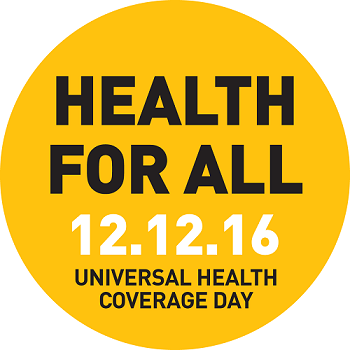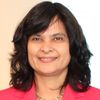
Co-authored by Arin Dutta, Megan Ginivan, and Suneeta Sharma
According to the World Health Organization, achievement of universal health coverage (UHC) means that all people can access the health services they need to become and stay healthy without suffering financial hardship. Health insurance schemes are meant to allow people to contribute—prior to their need for services—to a funding “pool” that will pay for future healthcare. The more that people of varying health status and ability to pay join the scheme, the more likely it becomes that pooled funds will be sufficient to cover needs as they arise. People who stay healthy access less care and subsidize the sick, and risk of illness is “pooled.” Further, if contributions are based on ability to pay, those who are better off assist those with fewer means. It is commonly believed that forming large, unified, insurance-based risk pools in developing countries is the only way to achieve UHC that ensures broad access to care and protects the poor from burdensome, potentially impoverishing health spending.
UHC and health insurance coverage are often assumed to mean the same thing. However, it is not necessarily true that the road to UHC must be paved with expanded health insurance! Here, we discuss common misconceptions about how insurance schemes advance the principles of universal health coverage.
1. “UHC can only be achieved through expanded health insurance.”
No country has reached true universal coverage. UHC is aspirational and requires progress along three dimensions, related to the following questions:
· Who is the population covered?
· What type and quality of services are included?
· What proportion of costs are covered?
Health insurance expansion can pool risk and finance access for those covered, but it does not necessarily guarantee that most people can access all services, or that final out-of-pocket costs (given premiums, deductibles, and co-payments) are affordable. Access and affordability effects depend a lot on the design of the insurance scheme. Insurance is only one way to form a risk pool. Another option is to use tax revenues to pay for healthcare, if revenues are sufficient. This pools risk and distributes the costs of illness, with the burden of financing shared across taxpayers. As observed in a report by Oxfam, Malaysia and Sri Lanka achieved among the highest levels of financial protection in Asia through tax-based health systems. Other countries, including Kyrgyzstan, Thailand, and Mexico, have made significant strides toward UHC by pooling insurance premiums with general tax revenue to cover all segments of the population. Expanding insurance schemes can be an important step—but it is not the only avenue, nor is it sufficient to achieve UHC.
2. “Health insurance is the most effective way to achieve UHC.”
An effective path toward UHC depends on a country’s development level, health needs, and health system capacity. What is the lowest cost for society to cover the greatest proportion of the population with a defined package of services, within a given timeframe? For poor countries with no pre-existing social health insurance mechanisms (i.e., using payroll-based contributions from formal sector workers), establishing a large-scale insurance scheme would require significant investment, regulation, and administrative capacity. Insurance schemes are also difficult to scale quickly. In these countries, raising general tax revenues to provide free essential primary health services may be a better intermediate mechanism for progress toward UHC, especially for reaching the poor.
3. “Expanding health insurance is the most efficient way to purchase services toward UHC.”
Health insurance is not a perfect solution for the challenges that countries face in purchasing health services. Poorly designed insurance schemes can distort incentives for providers; encourage curative care over preventive care; and promote inefficiencies, overuse, and fraud (or some combination of the above). Fee-for-service reimbursement, for example, may incentivize providers to increase use of covered services. A study in The Lancet on progress toward UHC in nine low- and middle-income countries reported that Ghana and Vietnam initiated insurance schemes with fee-for-service and quickly saw costs escalate. Both countries have since restructured their payment systems for providers, moving toward a fixed per-patient payment based on expected levels of use for certain services (called capitation payments), rather than paying for each time a service is provided. With insurance, someone other than the patient foots the bill at the point of care, which may affect both the provider and the patient’s incentive to be rational. As the president of India’s Public Health Foundation recently noted in the Times of India, without properly aligned incentives and accountability, providers might be tempted to treat insured patients like ATMs.
4. “Health insurance is a good way to ensure access to care and financial protection for the poor.”
Health insurance does not guarantee access to care, particularly for the poor. First, for the poor to benefit from health insurance, they must actually be included in insurance pools. This may require someone else, like the government, to pay for all or most of their premiums. Poorer members of society are more likely to be outside the formal economy, and unable to participate in insurance schemes using traditional methods like payroll contributions. Second, health insurance doesn’t address physical barriers like distance to a facility or the time required to access care. If services are concentrated in urban hospitals, the rural poor are out of luck, even with insurance. These barriers increase the hidden cost of accessing health services, pushing them out of reach for the poor. Health insurance coverage in India increased from 1 percent to 15 percent from 2004–2014, and insurance schemes specifically targeted the poor. The Times of India, however, recently reported on a study finding that out-of-pocket spending among the poorest quintile rose during the same period by 77 percent. Additionally, health insurance is often incorrectly assumed to be easily understood. In Kenya, for example, the National Hospital Insurance Fund scheme is mandatory for formal sector employees and allows informal workers to opt in. However, a survey found that, while 91 percent of respondents were aware of the fund, only 51 percent knew how to join it. This helps explain the limited success in expanding the scheme to informal sector workers.
5. “A well-financed, properly structured and incentivized health insurance scheme will put countries on the road to UHC.”
Even countries with well-designed, well-financed health insurance schemes will face some challenges in moving toward UHC. As mentioned previously, it is difficult to enroll the poor and people working in the informal economy in insurance schemes. Some stakeholders have proposed community-based health insurance, with low premiums collected locally at the household level, as a solution worthy of expansion. However, community-based health insurance schemes are small risk pools, financially limited to a small set of benefits that cannot significantly help to achieve UHC. Insurance schemes more easily reach formal, salaried employees who contribute a portion of their earnings through payroll taxes—and provide these populations with more attractive benefits. Countries are then faced with the problem of trying to both cover very different populations and ensure that they can all access the same package of services. Insurance schemes may intend to offer uniform services, but the reality of paying for it can get in the way. Colombia, for example, passed a law giving everyone the same package, even though contribution levels across the population vary; the scheme now faces financial challenges. In China, 96 percent of the population has access to insurance, but benefits vary across provinces according to wealth. Even in situations where insurance schemes reach many people, tiers of varying access and quality (often along income lines) complicate progress toward UHC principles of equity and access.
Health insurance can definitely help countries move toward universal coverage, but it should not be seen as a magic bullet. Investment in expanding health insurance schemes must be accompanied by investment in the health system. For health insurance to work, there should be in-network facilities and health workers where citizens need them. Additional financing mechanisms may also be needed—e.g., earmarking from certain types of taxes—to fund any insurance pool deficits incurred to meet social objectives, such as ensuring that covered services are comprehensive and available to everyone. Successful insurance schemes are carefully designed and monitored to align incentives across health providers and payers, and to realize the available benefits in increased effectiveness and efficiency. Countries without this capacity to design, run, and finance expanded health insurance should not stall. They can still make medium-term progress toward UHC through other pathways, like raising general tax revenue from which to spend directly on health services for the poor and informal sector workers. Expanding health insurance will be a step toward UHC that low-resource countries need to consider when the time is right, given their country context.
Suneeta Sharma, PhD, is the director of the USAID-funded Health Policy Plus project and vice president of the Health Practice at Palladium. Arin Dutta, PhD, is the technical director for health financing at the Health Policy Plus project; and Megan Ginivan, MPA, is an associate for health systems analysis on the same project.
